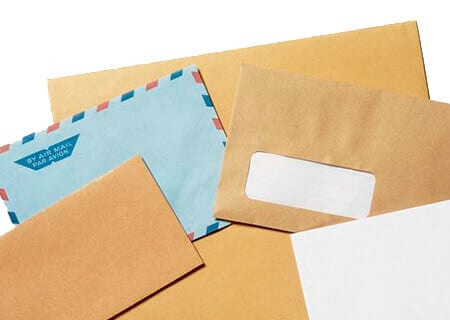Say goodbye to the age-old practice of moistening envelope glue manually, thanks to the advent of affordable, self-seal envelopes. Although the experience of licking envelope glue is universally unpleasant and has spurred countless urban legends, there are many reasons to appreciate the “lickable” gum seal.
The Underdog Story of the Gum Seal
The typical glue seal on an envelope often gets a bad rep. Yet, upon its release, this product posed a groundbreaking development in industrial technology, offering more solutions than problems.
Breaking Down Myths and Misconceptions About Gum-Seal Envelopes
The everyday glue seal on an envelope is often dubbed a gum seal. The key ingredient contributing to its creation is a product known as gum arabic. Derived from the sap of two specific species of acacia trees, gum arabic enjoys an illustrious presence in the industrial sector thanks to its budget-friendly nature and attractive properties.
What is gum arabic?
Gum arabic is a product derived from the sap of two particular species of acacia trees. It contains an even mixture of polysaccharides (starchy molecules) and glycoproteins, which act as natural adhesives. Apart from its use as a binding agent in gum seals, it also forms an essential ingredient in various edible products such as marshmallows and M&Ms.
The Advantageous Properties of Gum Arabic
The unique composition of gum Arabic makes it an exceptional adhesive that’s edible to humans. Moreover, it can be reactivated with the introduction of water; hence, it’s termed a “remoisten able” glue. Known for its excellent stability during transport and safe human exposure, gum seals debunk any misconceptions about licking envelopes being a health hazard.
The Seinfeld Anecdote
Despite the comedic twist given by the iconic TV show Seinfeld, where a character suffers fatal poisoning from licking hundreds of envelopes, the truth stands that envelope glue is absolutely safe for human contact. Institutions like America’s Food and Drug Administration oversee the production of envelopes in locations globally, ensuring safety.
Weighing the Pros and Cons of Gum Envelopes
Although gum seals are incredibly stable and provide precise control over the use of glue, they are not without their limitations. Alternatives like latex seals or Peel ‘n’ Seal (PNS) envelopes have their own set of advantages for personal use or specific work scenarios.
Why Gum Seal Envelopes?
Despite the alternatives, traditional gum envelopes remain the preferred choice for operations involving mass mailing envelopes, owing to their affordability and less complicated properties.
Key Takeaways
- Gum arabic, the primary ingredient in gum seals, is derived from the sap of two specific species of acacia trees.
- Gum seals are termed as “remoistenable” glue due to their ability to be reactivated with water.
- They are safe, stable, and provide precise control over the use of glue.
- Alternatives like latex seals or Peel ‘n’ Seal (PNS) envelopes are best suited for personal use or specific work scenarios.
In closing, gum seal envelopes offer an affordable option for large-scale storage and distribution of envelopes. Browse through our extensive product line to understand the versatility gum envelopes offer.



